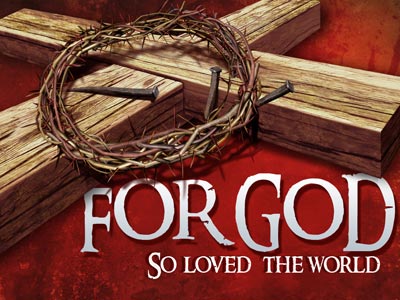-
The Altar (Part 1) Series
Contributed by Joshua Blackmon on Jan 9, 2023 (message contributor)
Summary: This sermon introduces the Tabernacle and the altar. It points to the reality that the Tabernacle was symbolic of the finished work of Calvary.
The True Tabernacle (The Altar: Part 1)
TEXT: Hebrews 13:9-16 (NKJV)
"We have an altar from which those who serve the tabernacle have no right to eat. 11 For the bodies of those animals, whose blood is brought into the sanctuary by the high priest for sin, are burned outside the camp. 12 Therefore Jesus also, that He might sanctify the people with His own blood, suffered outside the gate. 13 Therefore let us go forth to Him, outside the camp, bearing His reproach. 14 For here we have no continuing city, but we seek the one to come. 15 Therefore by Him let us continually offer the sacrifice of praise to God, that is, the fruit of our lips, giving thanks to His name. 16 But do not forget to do good and to share, for with such sacrifices God is well pleased."
INTRODUCTION:
For the next several weeks we will open the Bible and explore what the Scriptures say about the tabernacle. The tabernacle was the tent that was central to the worship of the children of Israel after they came out of Egypt. This tent, its rooms, furniture, and surrounding fence were symbolic of our relationship with God through Jesus Christ. We will see a pattern in the way the furniture was set up that is repeated from Genesis to Revelation. When we see repeated patterns in Scripture it is because there is something God wants us to understand.
Before we dive in, it may be appropriate to recall the conversation between Jesus and one of his disciples when they were leaving the temple one day. The temple followed the pattern of the tabernacle but on a larger and more permanent scale. The disciple exclaimed, "Look, Teacher, what wonderful stones and what wonderful buildings!" (Mark 1:13 ESV). History tells us that the temple had been beautified and expanded by Herod to the point that it was beyond spectacular. Jesus replied that the temple would be destroyed and not even one stone would be left on another. He wanted his disciples to know that the temple (and the tabernacle, and every other instance of their pattern) did not get their significance from their physical structure, but from the reality that God is present in the pattern inviting humanity into a relationship with him.
That temple would become little more than a pile of stones without the Presence of God, just as Solomon's temple before had, and the tent that Israel worshipped in during their wilderness journey. As we walk through the tabernacle we want to remember this. What makes our sacred spaces and times special are our encounters with God's holiness and grace in them.
J. Daniel Hays, "The Temple and the Tabernacle: A Study of God's Dwelling Places from Genesis to Revelation (Grand Rapids: Baker Books, 2016), ch. 1.
The writer of Hebrews says:
Hebrews 8:1-7 (ESV)
"Now the point in what we are saying is this: we have such a high priest, one who is seated at the right hand of the throne of the Majesty in heaven, a minister in the holy places, in The True Tent [Tabernacle] that the Lord set up, not man. 3 For every high priest is appointed to offer gifts and sacrifices; thus it is necessary for this priest also to have something to offer. 4 Now if he were on earth, he would not be a priest at all, since there are priests who offer gifts according to the law. 5 They serve as a copy and shadow of the heavenly things. For when Moses was about to erect the tent, he was instructed by God, saying, “See that you make everything according to the pattern that was shown you on the mountain.” 6 But as it is, Christ has obtained a ministry that is as much more excellent than the old as the covenant He mediates is better, since it is enacted on better promises. 7 For if that first covenant had been faultless, there would have been no occasion to look for a second."
The OT is filled with what has been termed types and shadows. We encounter shadows as we move toward a source of light that has something in front of it. As the OT writers moved towards the coming of Messiah, they encountered His Shadow. Shadows are imperfect representations of the real.
In the opening chapters of Genesis, we read about the garden which Yahweh planted in the east of Eden. It was a place where God and humanity shared a relationship. That's important. Later in Exodus when the LORD gave Israel the pattern to build the tabernacle he gave them a three-fold formula for their relationship with him: "I will be your God; you will be my people; I will dwell in your midst" (Exod 22:31; 25:8; 29:45-46; Lev 26:11-12). Most of the second half of the entire book of Exodus is a description of God's pattern and plan for the tabernacle, the portable temple where they would worship and commune with him, and the account of Israel building it. God used a few words in Genesis 1 to describe his act of creating the billions of stars, yet when He talks about the place that symbolizes His relationship with us, He slows down and takes His time detailing every little thing. God is interested in a relationship with us.

 Sermon Central
Sermon Central



